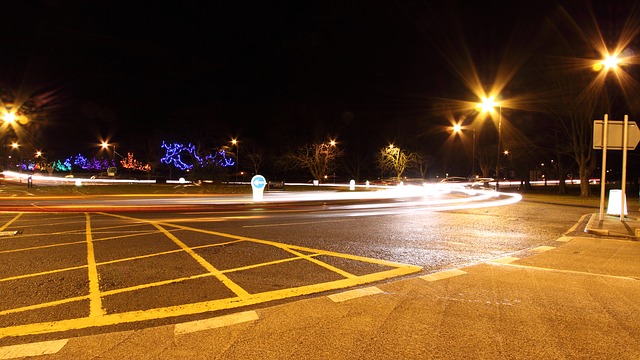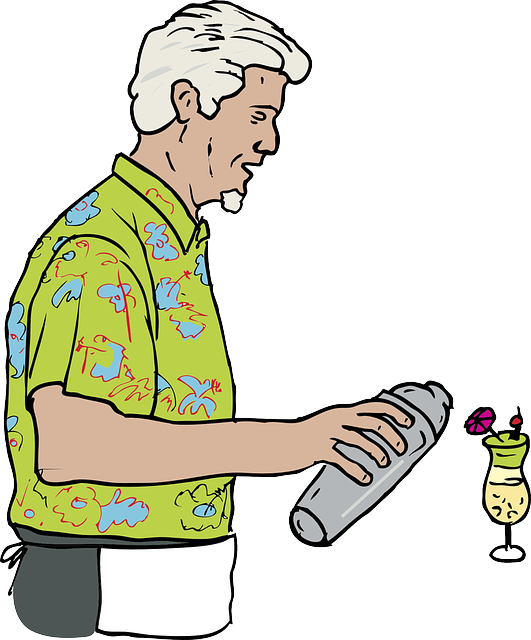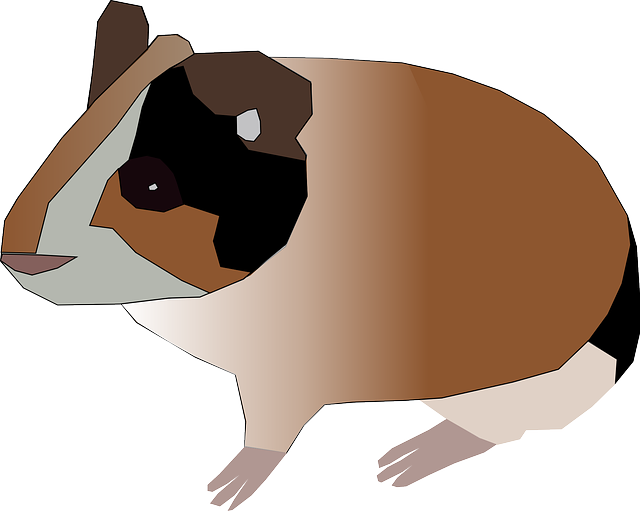الشعوب السلاڤية
| المناطق ذات التجمعات المعتبرة | |
|---|---|
| الروس | 150 مليون |
| الاوكرانيون | 39.8–57.5 مليون |
| البلاروس | 10 مليون |
| روسين | 75,000 |
| الپولنديون | 60 مليون |
| التشيك | 11–12 مليون |
| السلوڤاك | 6–6.5 مليون |
| سيليز | 5 مليون |
| موراڤ | 1 مليون |
| كاشوب | 500,000 |
| سورب | 60,000–70,000 |
| الصرب | 10.5 مليون |
| البلغار | 9.1–10.1 مليون |
| الكروات | 8–8.5 مليون |
| بوشناق | 3-4 مليون |
| سلوڤين | 2.5 مليون |
| مقدونيون | 2–3.5 مليون |
| مونتنگرين | 625,000 |
| Languages | |
|
اللغات السلاڤية (الشرقية، الجنوبية، الغربية) | |
| Religion | |
|
المسيحية الإسلام إلحاد الوثنية الحديثة السلاڤية | |
| Related ethnic groups | |
| الشعب البلطيقي | |
الشعب السلاڤي ينتمي إلى الجماعة اللغوية العرقية الهندو-اوروبية ويقطن اوروبا الوسطى والشرقية وجنوب شرق اوروبا، شمال آسيا وآسيا الوسطى، ويتحدثون اللغات السلاڤية الهندو-اوروبية، ويتشاركون، بدرجات متفاوتة، في عادات ثقافية وخلفيات تاريخية معينة. وقد انتشروا منذ مطلع القرن السادس ليسكنوا معظم وسط وشرق اوروبا والبلقان. وبالاضافة لتمركزهم الرئيسي في اوروبا، فقد استوطن بعض السلاڤ الشرقيين (الروس) لاحقاً في سيبرياوآسيا الوسطى. وقد هاجر جزء من الأعراق السلاڤية إلى أجزاء أخرى من العالم. ويقطن أكثر من نصف أراضي اوروبا مجتمعات ناطقة بلغات سلاڤية. ويبلغ التعداد العالمي للمنحدرين من أصول سلاڤية ما يقرب من 400 مليون نسمة، مما يجعلهم رابع أكبر عرق جامع في العالم.
الأمم والجماعات العرقية الحالية التي يضمها اسم العرق سلاڤ تتنوع وراثياً وثقافياً والعلاقات بينهم – حتى داخل الجماعة العرقية المفردة – تتباين، وتتراوح من حس بالترابط وحتى الكراهية المتبادلة.
الشعب السلاڤي الحالي يُصنـَّف إلى سلاڤ شرقيين (ويضمون الروس، الاوكرانيين، والبلاروس)، سلاڤ غربيين (ويضمون الپولنديين، التشيك، السلوڤاك والسيليز), وسلاڤ جنوبيين (ويضمون البلغار, المقدونيين، السلوڤين، الكروات، البوشناق والصرب والمونتنگرين). ولقائمة أكثر تفصيلاً، انظر التقسيمات العرقية الثقافية.
اسم العرق
|
مواضيع هندو-اوروبية |
|---|
| اللغات الهندو-اوروبية |
|
الألبانية • الأرمنية • البلطيقية الكلتية • الجرمانية • اليونانية الهندو-إيرانية (الهندو-آرية, الإيرانية) الإيطالية • السلاڤية منقرضة: الأناضولية •
البلقانية القديمة (الداتشية, |
| الشعوب الهندو-اوروبية |
|
الألبان • الأرمن البلط • الكلت • الشعوب الجرمانية اليونان • الهندو-آريون الإيرانيون • اللاتين • السلاڤ تاريخياً: الأناضوليون (الحيثيون, لويون) |
| الهندو-اوروبية الأولية |
|
اللغة • المجتمع • الديانة |
|
فرضية الكورگان الأناضول • أرمنيا • الهند • PCT |
| الدراسات الهندو-اوروبية |
الاسم الذاتي السلاڤي أعيد هجريبه في السلاڤية الأولى في الصيغة Slověninъ. أقدم الوثائق المكتوبة بالسلاڤونية الكنسية القديمة والتي تعود إلى القرن التاسع تشهد بأن حدثة Словѣне Slověne تصف السلاڤ. الشواهد السلاڤية المبكرة الأخرى تحوي الحدثة السلاڤية الشرقية القديمة Словѣнѣ Slověně لتشير إلى "جماعة سلاڤية شرقية بالقرب من نوڤگورود." إلا حتى أقدم اشارات مكتوبة للسلاڤ بهذا الاسم توجد في لغات أخرى. ففي القرن السادس الميلادي، يشير پروكوپيوس، في كتاباته باللغة اليونانية البيزنطية، إلى Σκλάβοι Sklaboi، Σκλαβηνοί Sklabēnoi، Σκλαυηνοί Sklauenoi, Σθλαβηνοί Sthlauenoi، أوΣκλαβῖνοι Sklabinoi, بينما يشير معاصره جوردانس إلى Sclaveni باللاتينية.
الاسم الذاتي السلاڤي Slověninъ is usually considered a derivation from slovo "word," originally denoting "people who speak (the same language)," i.e. people who understand each other, in contrast to the Slavic word denoting "foreign people" – němci, meaning "mumbling, murmuring people" (from Slavic němъ – "mumbling, mute"). The latter word may be the derivation of words to denote German/Germanic people in many later Slavic languages: e.g., Czech Němec, Slovak Nemec, Slovene Nemec, Belarusian, Russian and Bulgarian Немец, Serbian Немац, Serbian, Bosnian وCroatian Nijemac, Polish Niemiec, Ukrainian Німець, etc., but another theory states that rather these words are derived from the name of the Nemetes tribe, which مشتقة من الجذر الكلتي nemeto-.
الحدثة الإنگليزية Slav مشتقة من الحدثة الإنگليزية الوسطى sclave، التي كانت مستعارة من لاتينية القرون الوسطى sclavus "slave," itself a borrowing and Byzantine Greek σκλάβος sklábos "slave," which was in turn apparently derived from a misunderstanding of the Slavic autonym (denoting a speaker of their own languages). The Byzantine term Sklavinoi was loaned into Arabic as Saqaliba by medieval Arab historiographers.[] However, the origin of this word is disputed.
Alternative proposals for the etymology of Slověninъ propounded by some scholars enjoy much less support. B.P. Lozinski argues that the word slava once had the meaning of worshipper, in this context meaning "practicer of a common Slavic religion," and from that evolved into an ethnonym. S.B. Bernstein speculates that it derives from a reconstructed Proto-Indo-European *(s)lawos, cognate to Ancient Greek λαός laós "population, people," which itself has no commonly accepted etymology. Meanwhile others have pointed out that the suffix -enin indicates a man from a certain place, which in this case should be a place called Slova or Slava, possibly a river name. The Old East Slavic Slavuta for the Dnieper River was argued by Henrich Bartek (1907–1986) to be derived from slova and also the origin of Slovene.
Last scientific opinions about the earliest mentions of Slavic raids across the Lower Danube River show that they may be dated to the first half of the sixth century, yet no archaeological evidence of a Slavic settlement in the Balkans could be securely dated before ca. 600
التاريخ
نقاش حول السلاڤ المبكرين
هناك نظرية تخبر حتى الهندوأوروبييين الأوائل وكذلك السلاف الأوائل تعود أصولهم إلى السهول الروسية الموجودة في المنطقة الواقعة في أوكرانيا والأجزاء الجنوبية من روسيا (انظر فرضيات كورجان). يرى بعض فهماء التاريخ حتى موطن السلاف الأوائل هوأوروبا الوسطى منذ تاريخ سحيق وأنهم هم أصحاب الثقافة اللوساتية وثقافة برزي ورسك وكان جزءا من الحضارة تشيرنايخوف وهذا الرأي لا يناقض فرضيات كورجان كثيرا.
الأصول
|
مواضيع هندو-اوروبية |
|---|
| اللغات الهندو-اوروبية |
|
الألبانية • الأرمنية • البلطيقية الكلتية • الجرمانية • اليونانية الهندو-إيرانية (الهندو-آرية, الإيرانية) الإيطالية • السلاڤية منقرضة: الأناضولية •
البلقانية القديمة (الداتشية, |
| الشعوب الهندو-اوروبية |
|
الألبان • الأرمن البلط • الكلت • الشعوب الجرمانية اليونان • الهندو-آريون الإيرانيون • اللاتين • السلاڤ تاريخياً: الأناضوليون (الحيثيون, لويون) |
| الهندو-اوروبية الأولية |
|
اللغة • المجتمع • الديانة |
|
فرضية الكورگان الأناضول • أرمنيا • الهند • PCT |
| الدراسات الهندو-اوروبية |
جدل الموطن الأصلي
- Milograd culture hypothesis: The pre-Proto-Slavs (or Balto-Slavs) were the bearers of the Milograd culture (7th century BCE to 1st century CE) of northern Ukraine and southern Belarus.
- Chernoles culture hypothesis: The pre-Proto-Slavs were the bearers of the Chernoles culture (750–200 BCE) of northern Ukraine, and later the Zarubintsy culture (3rd century BCE to 1st century CE).
- Lusatian culture hypothesis: The pre-Proto-Slavs were present in north-eastern Central Europe since at least the late 2nd millennium BCE, and were the bearers of the Lusatian culture (1300–500 BCE), and later the Przeworsk culture (2nd century BCE to 4th century CE).
- Danube basin hypothesis: postulated by Oleg Trubachyov; sustained at present by Florin Curta, also supported by an early Medieval Slavic narrative source - Nestor's Chronicle
أول سجل
ذكر جميع من پلني الأكبر وپطليموس قبيلة Veneti around the river Vistula. The lands east of the Rhine, Elbe, Oder, and west of the Vistula river were referred to as Magna Germania by Tacitus in AD 98. Romans occupied the land west of the Rhine. From Romanticism, the allochthonic school theorem is that the 6th century authors re-applied this ethnonym to hitherto unknown Slavic tribes, whence the later designation "Wends" for Slavic tribes, and medieval legends purporting a connection between Poles and Vandals.
سيناريوهات التكوين العرقي
الهجرات السلاڤية
التجمعات السلاڤية تحت حكم أجنبي
التعداد
The worldwide population of people of Slavic descent is close to 400 million. The three largest Slavic ethnic groups are Russians (150 million), Poles, and Ukrainians (50 million). Other Slavic ethnic groups include Czechs (11 million), Serbs (10,5 million), Bulgarians (10 million), Belarusians (10 million), Croats (8 million), Slovaks (7 million), Silesians (5 million), Bosniaks (3 million), Macedonians (3 million), Slovenes (2,5 million), Montenegrins (700 000). Polish and Serbians make up the largest Slavic populations or Slavic-descended American population in the United States.
الدين
Most Slavic populations gradually adopted Christianity (the East Slavs Orthodox Christianity and the West Slavs Roman Catholicism, with South Slavs split by the two religions) between 6th and 10th century, and consequently their old pagan beliefs declined. See also Rodnovery.
The main Slavic ethnic groups by religion:
Mainly Orthodox Christians
الأبجدية
A page from Azbuka, the first Russian textbook, printed by Ivan Fyodorov in 1574, features the Cyrillic script.
The alphabet depends on what religion is usual for the respective Slavic ethnic groups. The Orthodox use the Cyrillic alphabet and the Roman Catholics use Latin alphabet, the Bosniaks which are Muslims also use the Latin. Few Greek Roman and Roman Catholics use the Cyrillic alphabet however. The Serbian language, Montenegrin language and Macedonian language can be written using both the Cyrillic and Latin alphabets, but the Cyrillic remains preferred by a large majority. There is also a Latin script to write in Belarusian, called the Lacinka alphabet. اللغةSlavic studies began as an almost exclusively linguistic and philological enterprise. As early as 1833, Slavic languages were recognized as Indo-European. Slavic standard languages which are official in at least one country:
اللغة السلاڤية الأولى
Area of Balto-Slavic dialectic continuum (purple) with proposed material cultures correlating to speakers Balto-Slavic in Bronze Age (white). Red dots= archaic Slavic hydronyms
التقسيمات العرقية الثقافية
Present-day distribution of Slavic languages and language groups.
Slavs are customarily divided along geographical lines into three major subgroups: East Slavs, West Slavs, and South Slavs, each with a different and a diverse background based on unique history, religion and culture of particular Slavic group within them. The East Slavs may all be traced to Slavic-speaking populations that were loosely organized under the Kievan Rus' empire beginning in the 10th century AD.
التقسيمات العرقية الثقافية
توزيع الشعوب السلاڤية حسب اللغة.
سلاڤ شرقيونالموضوعة الرئيسية: السلاڤ الشرقيون
سلاڤ غربيونمنطق رئيسي: سلاڤ غربيون
سلاڤ جنوبيونالموضوعة الرئيسية: السلاڤ الجنوبيون
† انقرضوا 7 Most Shopi self-declare as Bulgarians. Cognate with Torlaks. 9 Half of the Montenegrins opt Serb ethnicity, with a historical tradition, dating back to the Serb tribes that settled Montenegro many centuries ago. While others opt for Montenegrin ethnicity, are followers of the same Serbian Orthodox Church, speak the same language but do not have a historical tradition (prior to 1948 Montenegrin was used solely as a regional affiliation of a Serb, meaning a Serb from Montenegro). A small number of ethnic Montenegrins, mostly supporters of Montenegrin independence and adherents of the small Montenegrin Orthodox Church call their native language Montenegrin, considering it a separate language from Serbian. 10 Both occur widely in northeastern Croatia and also in northern Serbia; their Ikavian dialect is subequal as southern Croats in Hercegovina and Dalmatian mainland from where they once emigrated. Considered part of Croats by most of them, although recently (since Yugoslav disaster) some within Serbia consider themselves a separate peoples 11 These Gorani are Slavs in Kosovo; but not to be confound with other Gorani (or Gorinci) in the highlands of western Croatia (Gorski Kotar county). 12 A census category recognized as an ethnic group. Most Slavic Muslims now opt for Bosniak ethnicity, but some still use the "Muslim" designation. 13 This identity continues to be used by a minority throughout the former Yugoslav republics. The nationality is also declared by diasporans living in the USA and Canada. There are a multitude of reasons as to why people prefer this affiliation, some published on the article. Note: Besides ethnic groups, Slavs often identify themselves with the local geographical region in which they live. Some of the major regional South Slavic groups include: Zagorci in northern Croatia, Istrani in westernmost Croatia, Dalmatinci in southern Croatia, Boduli in Adriatic islands, Slavonci in eastern Croatia, Bosanci in Bosnia, Hercegovci in southern Bosnia (Herzegovina), Krajišnici in western Bosnia, Semberci in northeast Bosnia, Srbijanci in Serbia proper, Šumadinci in central Serbia, Vojvođani in northern Serbia, Sremci in Syrmia, Bačvani in northwest Vojvodina, Banaćani in Banat, Sandžaklije (Muslims in Serbia/Montenegro border), Kosovci in Kosovo, Crnogorci in Montenegro proper, Bokelji in southwest Montenegro, Trakiytci in Upper Thracian Lowlands, Dobrudzhantci in north-east Bulgarian region , Balkandzhiiin Central Balkan Mountains, Miziytci in north Bulgarian region, Pirintsi in Blagoevgrad Province, Rupchi in the Rhodopes, etc. Another interesting note is that the very term Slavic itself was registered in the US census of 2000 by more than 127,000 residents. المصادر
طالع أيضاً
وصلات خارجية
|
















